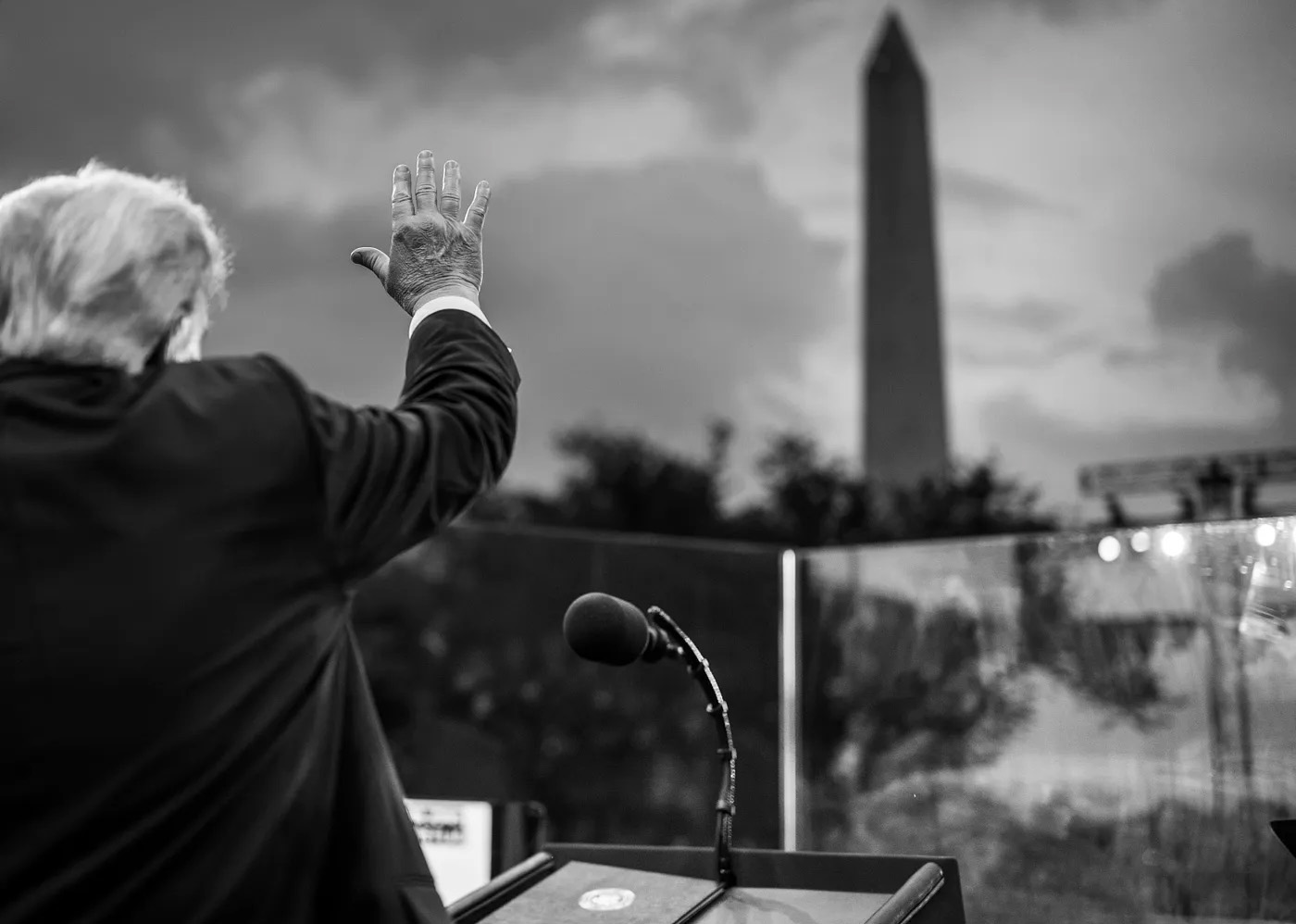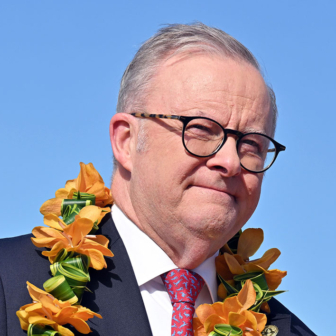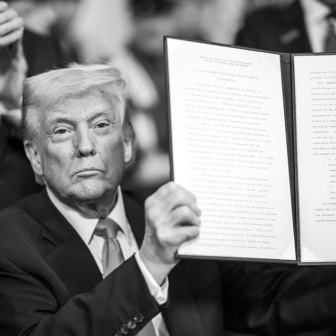The expanding Middle East war raises the pressure in the most dangerous international period since the cold war eased to an end in the 1980s. There’s a link between that understanding of systemic risk to the state symbolism of the parades honouring the king’s birthday — Charles in London and Donald in Washington.
The trooping of the colour in London won the Anglosphere pomp prize, marking the monarch’s official birthday. And the official reason the tanks rolled in Washington last Saturday was the 250th anniversary of the US Army. But for the president taking the salute in his red Republican tie it was all about his seventy-ninth birthday: Long live The Donald!
“No Kings” was the vivid response of protest rallies across America opposing the Trump trooping. The monarchic moment underlines today’s challenges to the king’s traditional job of guarding the borders and protecting the currency. Both parades honoured a great epigram, “War made the state and the state made war.” Charles Tilly’s line distills how bloody battle was transformed into law and legitimacy in the formation of nations, as brigands became barons and warlords became kings.
Uneasy is the head that wears the crown, because it’s a dangerous job being a warlord or king. The supreme leader of Iran may still be alive only because the United States vetoed Israel’s assassination plan on day one of its attack.
Exploding missiles are the example and military parades are the symbol of today’s reality. Defence policy has marched to the top of the policy agenda — and the front of the budget queue — in our new age of uncertainty and war. The threat jostles with one of the defining norms of the last eighty years: the golden age of sovereign states.
As the king was sovereign, so the state has sovereignty. After the cataclysm of the second world war, respecting sovereignty and the sanctity of borders made for a safer world. Decolonisation and then the collapse of the cold war created 195 recognised countries. Modernity and globalisation built on their stability.
Sovereignty’s golden age delivered norms of legality and legitimacy for the smallest, least powerful states. Wars tended to be within nations and among their peoples: Korea, Vietnam, Yugoslavia, Somalia, Nigeria, Myanmar.
The holiday from history is such that the bloodiest conflict since 1945 is a forgotten war that killed 5.4 million people, primarily through disease and hunger — the second Congo war (1998–2003). That Great African War involved nine states, showing again the duality of borders. The border defines economic and ethnic identity and a nation’s legal existence, yet it is also the starting line for battle.
The big exception to this story of civil and border wars is the state so powerful that it decided old limitations and balances no longer applied. But Washington’s unipolar moment suffered hard lessons in Afghanistan and Iraq. Hubris is ever a kingly failing.
The American agony should have been a warning to Russia’s Vladimir Putin. Instead, the only lesson he took was a version of Thucydides: “The strong do what they will, the weak suffer what they must.”
Putin ushered in brutal power politics by invading and annexing Crimea in 2014. Russia suffered sanctions, was expelled from the G8, and then the rest of the world sighed, tut-tutted, and tried to carry on as before. But the golden age of sovereignty was strained and suffering.
The new cold war got its official start date when Russia invaded Ukraine in February 2022. What Putin thought he could conquer in a few weeks has become a long war; the brutal realist made a disastrous misjudgement about the Ukrainian reality.
Yet empire thinking is back and so are power blocs. In the first months of his second presidency Donald Trump could casually muse about taking Canada or Greenland or the Panama Canal. If you have the power, nations bend to your will and borders shift. Choose your sides and sharpen swords.
The arms-race measure becomes the percentage of your GDP spent on defence. The nations that suffered the harshest twentieth-century lessons about the danger of militarism — Germany and Japan — scramble to rebuild their military. Germany now has the world’s fourth-biggest defence budget.
Bloc politics can draw up the order of battle. That’s the high-risk prospect of the United States, Britain and France lining up against the authoritarian coalition of Iran, China, Russia and North Korea. Surveying that prospect, the British journalist Ambrose Evans-Pritchard observes: “The hybrid struggle between two rival blocs resembles the treacherous landscape before the Thirty Years War in 1618, and the First World War in 1914. All it takes is hubris and a few more errors to set off this slow-burning fuse.”
The military strategy for such a confrontation emerges. Less clear is the political and diplomatic strategy to handle the tensions.
The parade in Washington last Saturday shows what happens when a radical performance artist has command of an army. Expect no grand strategy from Donald Trump. He is a performer not a planner. Our hope must be that he prefers trade wars to the expense of real wars. •




